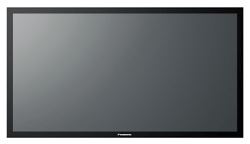4k2k: Are We Underestimating Its Value?
 With the predictable run of 4k2k announcements this CES, most comments have sensibly focused on content availability. This was undoubtedly the single greatest factor in the failure of 3D to create a revival in the TV market.
With the predictable run of 4k2k announcements this CES, most comments have sensibly focused on content availability. This was undoubtedly the single greatest factor in the failure of 3D to create a revival in the TV market.
Therefore the argument runs that with scarce native 4k2k content, the feature is doomed to niche status. Furthermore, the limitations of human vision mean that only a large screen (say 60” or bigger) or unnaturally close viewing would permit the extra resolution to be resolvable.
However, we are now in a different world of TV usage. Video standards and broadcasting count for less — at least as far as TV brands’ strategies are concerned. TV is becoming a mixture of video and graphics. As Smart TV services mature and the big processor cores in the next generation of TV chips are used, graphics and Internet content become increasingly important. Such content includes many more static items such as text and menus, where even though the exact details may not be resolvable, smooth curves and shading gradations are perceivable. Apple shocked the TV market with the launch of the first AppleTV box with its elegant menus and slick graphics.
As China is now the most dynamic TV market (with a taste not only for large sizes but also rich featuring), 4k2k could become especially valuable for improved rendering and readability of Chinese characters.
A one-dimensional consideration of 4k2k would appear unwise — it could become an important component of the smart TV experience. Of course it also requires setmakers to exploit the extra panel capability in their apps. While smart TV might survive without 4k2k, I suspect that 4k2k will be a tiny niche without new smart TV features.
This column was reprinted with permission from DisplaySearch and originally appeared here.





